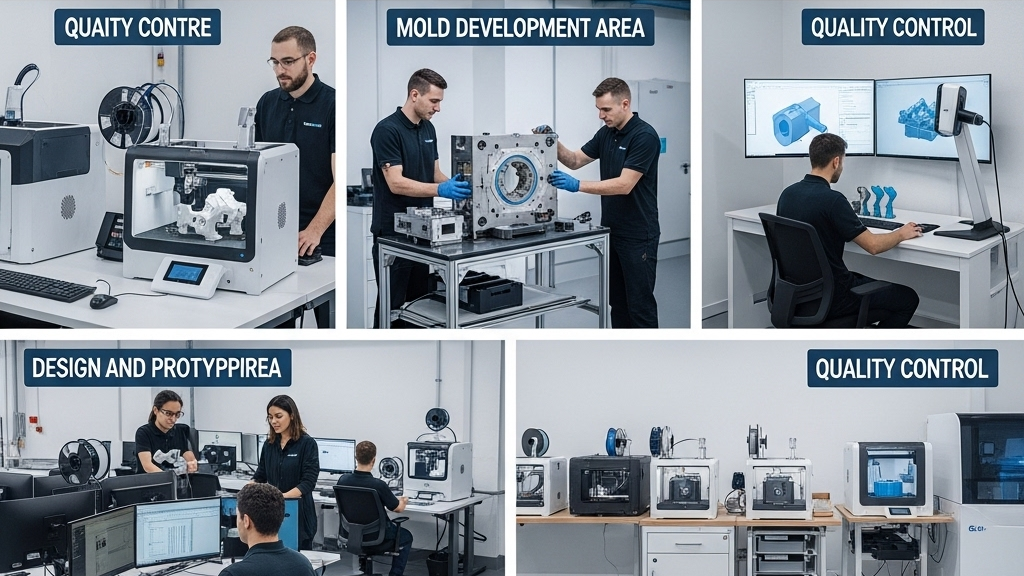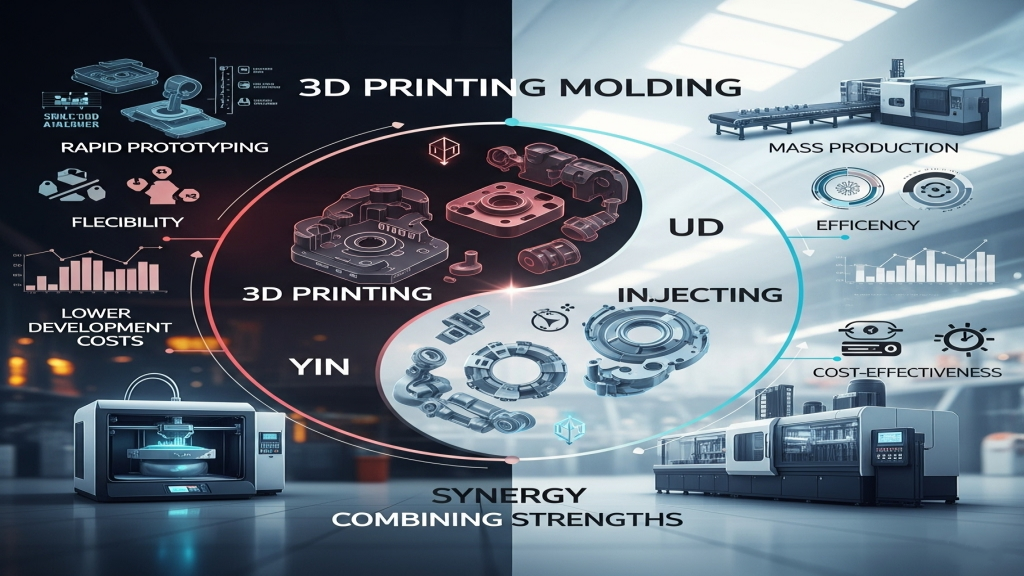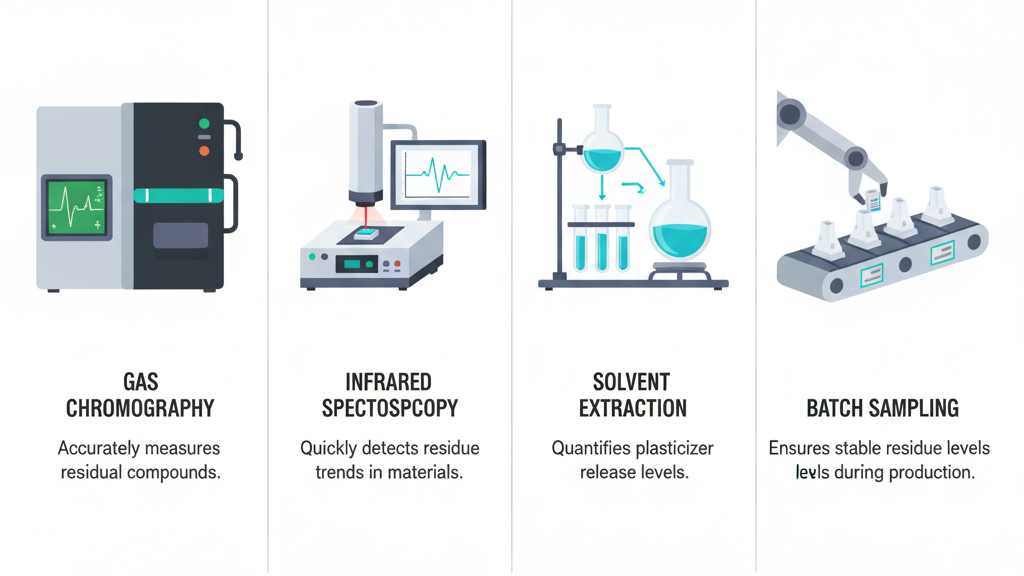Introduction

3D printing and injection molding each have their unique advantages. The former offers great flexibility and high design freedom, while the latter excels in high-efficiency production. Combining the two will open a new chapter in the plastic processing industry. By merging these two technologies, companies can achieve more efficient production and meet the increasingly complex market demands.
How does 3D printing complement injection molding?

The combination of 3D printing and injection molding helps overcome their individual shortcomings, making products better in both design and production. Injection molding can mass-produce high-precision parts, while 3D printing can be used to quickly create prototypes or complex components.
- Lower Development Costs: 3D printing quickly verifies designs, reducing the cost of traditional injection molding mold development.
- Increased Production Flexibility: 3D printing can quickly adjust designs, making the injection molding process more flexible.
- Enhanced Product Complexity: 3D printing can create complex geometric shapes, while injection molding enables efficient production.
- Faster Market Response: In the pre-production phase, 3D printing can quickly produce samples, shortening product time-to-market.
By combining these two processes, manufacturers can improve production efficiency while maintaining high quality.
How to optimize the manufacturing process by combining 3D printing and injection molding?

By combining 3D printing and injection molding, manufacturers can optimize the manufacturing process, achieving higher production efficiency and lower costs. This combination can maintain the advantages of injection molding while introducing innovative design elements from 3D printing.
- Shorten Production Cycles: 3D printing quickly produces samples, reducing wait time before injection molding.
- Lower Production Costs: During the development phase, 3D printing reduces unnecessary mold costs.
- Greater Design Flexibility: 3D printing can create complex structures, while injection molding provides large-scale production capabilities.
- Improved Product Quality: With precise manufacturing from 3D printing, injection molding can better control material flow, ensuring quality.
This combination helps companies shorten production cycles and lower costs while ensuring product quality.
How to achieve seamless integration of 3D printing and injection molding through optimized mold design?

Optimizing injection molds is critical for the integration of 3D printing and injection molding. Through proper mold and production process design, seamless integration of these two technologies can be achieved.
- Precise Flow Control: Design molds suitable for injection molding to ensure smooth integration of 3D printed parts.
- Enhanced Manufacturing Accuracy: Precision design can optimize the fit between injection molded and 3D printed parts.
- Reduced Manufacturing Defects: Proper mold design reduces defects during production, enhancing overall product quality.
- Optimized Post-processing: Designing molds with post-processing in mind can simplify later stages of production.
By optimizing mold design, 3D printing and injection molding can integrate seamlessly, improving both production efficiency and product quality.
Table Title
| Parameter | 3D Printing | Injection Molding | Combined Process | Advantages |
|---|---|---|---|---|
| Applicable Parts | Complex Components | Mass Production Parts | Small Batch High Precision | Increased Production Efficiency |
| Production Time | Longer | Shorter | Medium | Reduced Production Cycle |
| Cost | Higher | Lower | Medium | Lower Overall Cost |
| Design Freedom | High | Low | High | Innovative Design |
Title
The fusion of injection molding and 3D printing is becoming the new trend in manufacturing. By combining the two, companies can be more flexible in product design and more efficient in the production process, all while lowering costs. This technology fusion is shaping the future of manufacturing.
1.Optimized Design Process: Achieving the fusion of 3D printing and injection molding enhances design freedom.
2.Lower Manufacturing Costs: Reducing mold development costs through rapid prototyping.
3.Increased Production Efficiency: Combining 3D printing and injection molding to boost production efficiency and quality.
4.Adaptation to Market Demands: Providing flexible manufacturing solutions to meet diverse needs.
Conclusion
The fusion of 3D printing and injection molding improves production efficiency and reduces costs. By integrating these processes, companies can remain competitive in the market and meet more complex manufacturing demands.
For expert assistance in implementing for your production needs, visit our resource center or contact us. Let’s help you scale up your manufacturing with precision and efficiency!







